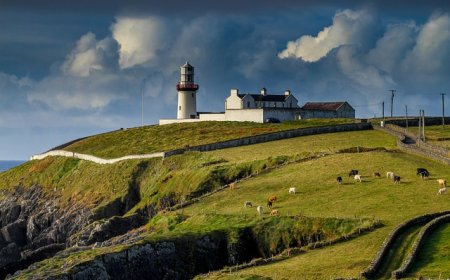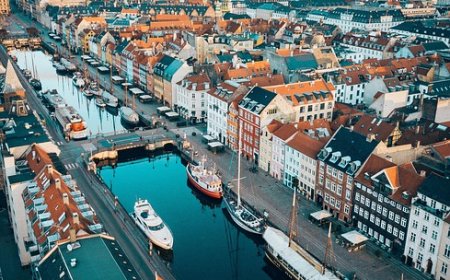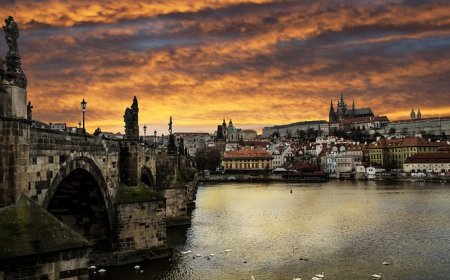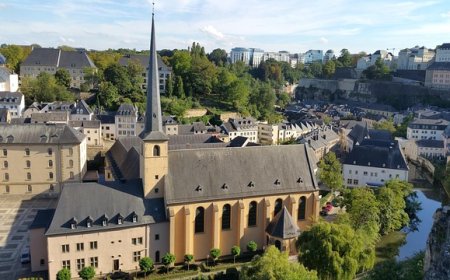Albania Geography, Culture, and History Explained
Learn about Albania for kids. Discover mountains, culture, and fun facts about this Balkan country.
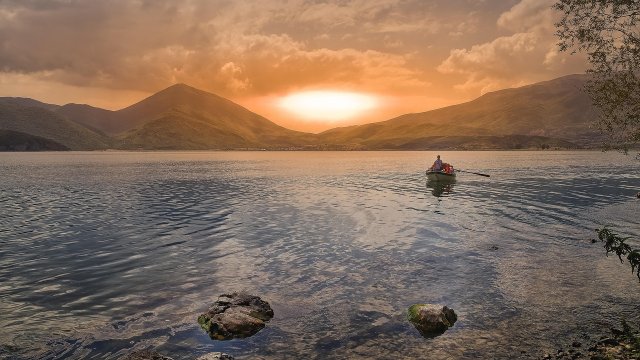
🇦🇱 Albania: Mountain Peaks, Mediterranean Views, and Ancient Heritage
🗺 Introduction
Albania is a small yet stunning country in Southeastern Europe, located along the Adriatic and Ionian Seas. Known for its majestic mountains, sparkling beaches, and ancient cities, Albania is often called one of Europe’s hidden gems. Its people are proud of their language, hospitality, and long history.
Though once one of the most closed-off countries in the world, Albania today is open, growing, and full of energy. It blends Eastern and Western cultures, creating a unique national identity shaped by its geography, traditions, and past.
🌍 Geography and Location
Albania is located on the Balkan Peninsula, bordered by Montenegro to the north, Kosovo to the northeast, North Macedonia to the east, and Greece to the south. To the west lies the Adriatic Sea, and to the southwest, the Ionian Sea, making Albania a coastal country with many beautiful beaches.
Much of the land is covered by mountains and hills, especially in the north and east. The Albanian Alps, also called the Accursed Mountains, are some of the wildest and most scenic landscapes in Europe. The country also has fertile valleys and wide rivers such as the Drin and Vjosa.
Albania enjoys a Mediterranean climate with warm, dry summers and mild, wet winters. This makes it ideal for farming olives, grapes, and citrus fruits.
🏙 Cities and Regions
The capital of Albania is Tirana, a colorful and lively city located in the center of the country. Tirana is known for its bright buildings, public art, and a large central square named Skanderbeg Square after Albania’s national hero. The city blends old and new, with mosques, churches, museums, and cafés that reflect its diverse history.
Other important cities include:
- Shkodër, one of the oldest cities in the Balkans, known for its fortress and lake
- Durrës, a port city with sandy beaches and Roman ruins
- Berat, called “the city of a thousand windows,” famous for its white Ottoman houses stacked on hillsides
- Gjirokastër, a UNESCO World Heritage site with stone-roofed houses and a large hilltop castle
Each region has its own traditions, dialects, and architecture, making travel through Albania feel like visiting many small countries in one.
👨👩👧👦 People, Language, and Culture
Albania has a population of about 2.7 million people. The majority are ethnic Albanians, and the official language is Albanian, one of the oldest languages in Europe. It has two main dialects: Gheg (spoken in the north) and Tosk (spoken in the south).
Religion is a personal choice in Albania, and the country is known for religious harmony. Muslims, Christians, and people of other beliefs live peacefully side by side.
Family is very important in Albanian life. Traditional values include respect for elders, hospitality, and loyalty. Visitors are often welcomed with food and kindness, and sharing meals is a major part of Albanian culture.
Folk music and dance are celebrated in festivals and holidays. Dances often include fast footwork and are performed in groups wearing traditional costumes with bright colors and embroidery.
🍽 Food and Traditions
Albanian food is delicious and influenced by Mediterranean, Turkish, and Balkan cuisines. Meals often include fresh vegetables, grilled meats, dairy, bread, and olive oil. Family gatherings and holidays always involve lots of food and time spent together.
Popular Albanian dishes include:
- Byrek – a baked pastry filled with cheese, spinach, or meat
- Tavë kosi – a baked dish of lamb and yogurt
- Fërgesë – a dish of peppers, tomatoes, and cheese
- Qofte – small grilled meat patties
- Baklava – a sweet dessert made with nuts and syrup
Traditional holidays include Independence Day (November 28), Spring Day (March 14), and Flag Day. Many Albanians also celebrate Bajram (Eid) and Christmas depending on their religion.
🏛 History of Albania
Albania has a long and interesting history. In ancient times, it was home to the Illyrians, who were later conquered by the Roman Empire. The region later became part of the Byzantine Empire and the Ottoman Empire, which ruled for over 400 years.
In the 15th century, a national hero named Skanderbeg led a strong resistance against the Ottomans. His statue now stands proudly in Tirana and other cities.
Albania declared independence in 1912, but the 20th century was filled with change. After World War II, Albania became a communist state, ruled by Enver Hoxha. It was one of the most isolated countries in the world during this time, with very little contact with other nations.
In 1991, Albania became a democracy. Since then, the country has worked to grow its economy, build international friendships, and join European organizations. Today, Albania is a candidate to join the European Union.
🌿 Nature and Environment
Albania is rich in natural beauty, with mountains, lakes, rivers, and coastlines that attract visitors from around the world. National parks protect rare plants and animals like lynx, bears, and eagles.
Popular natural spots include:
- Lake Ohrid, shared with North Macedonia, one of Europe’s oldest lakes
- Llogara Pass, a mountain road with views of the Ionian coast
- Theth and Valbona, two remote alpine valleys in the north
- Butrint National Park, a mix of nature and ancient ruins
Albanians care deeply about their land, and efforts are growing to reduce pollution, protect forests, and promote eco-tourism.
📚 Vocabulary List
| Word | Definition |
|---|---|
| Adriatic Sea | A sea on the western coast of Albania, part of the Mediterranean |
| Byrek | A baked pastry filled with cheese, meat, or vegetables |
| Skanderbeg | Albania’s national hero who fought against the Ottoman Empire |
| Gjirokastër | A historic Albanian city known for its stone houses and castle |
| Tavë kosi | A traditional dish made with lamb and yogurt |
| Albanian Alps | A mountain range in northern Albania also called the Accursed Mountains |
| Communism | A type of government Albania had until 1991, with strict state control |
| Ohrid | A lake shared by Albania and North Macedonia, famous for its age and clarity |
👧🧒 Kid-Friendly Summary
Albania is a small country in Europe with beaches, mountains, and colorful towns. People speak Albanian, one of the oldest languages in the world. The capital is Tirana, where there are fun markets and big city squares. Albanians are friendly and love to share food like cheesy pastries called byrek and tasty dishes made with yogurt.
A long time ago, Albania was ruled by empires and even had a secretive government. But now it's a free country where people celebrate holidays, dance in groups, and enjoy nature. It’s a great place to visit if you like mountains, castles, and kind people.
🧠 Interactive Quiz: What Do You Know About Albania?
1. What is the capital of Albania?
A) Skopje
B) Athens
C) Tirana
D) Durrës
2. What mountain range is found in northern Albania?
A) Carpathians
B) Alps
C) Albanian Alps
D) Dinaric Range
3. What is byrek?
A) A lake
B) A mountain pass
C) A pastry filled with cheese or meat
D) A type of bread
4. Who is Albania’s national hero?
A) Enver Hoxha
B) Julius Caesar
C) Skanderbeg
D) Alexander the Great
5. What two seas border Albania?
A) Black Sea and Adriatic Sea
B) Adriatic Sea and Ionian Sea
C) Aegean Sea and Red Sea
D) Mediterranean Sea and Baltic Sea
6. What kind of government did Albania have before 1991?
A) Democracy
B) Kingdom
C) Communism
D) Monarchy
7. What is tavë kosi made with?
A) Potatoes and carrots
B) Lamb and yogurt
C) Fish and lemon
D) Beans and rice
8. What kind of clothing do people wear during folk dances?
A) Suits and ties
B) Traditional costumes with embroidery
C) School uniforms
D) Hiking gear


















































